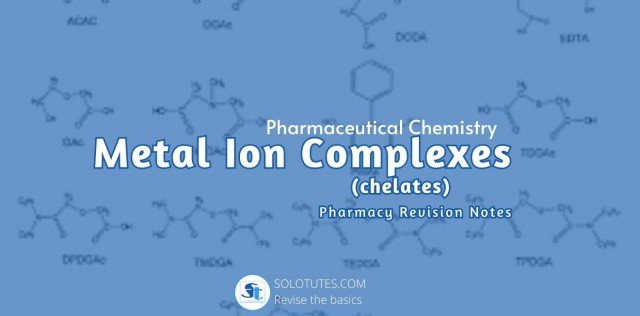BIOENERGETICS
Bioenergetics or biochemical thermodynamics deals with the study of energy changes (transfer and utilization) in biochemical reactions. The reactions are broadly classified as exergonic (energy releasing) and endergonic (energy consuming). Bioenergetics is concerned with the initial and final states of energy component of the reactants and not the mechanism of chemical reactions.Free energy:
The energy actually available to do work (utilizable) is known as free energy. Changes in the free energy (G) are valuable in predicting the feasibility of chemical reactions. The reactions can occur spontaneously if they are accompanied by decrease in free energy.
During a chemical reaction, heat may be released or absorbed. Enthalpy (H) is a measure of the change in heat content of the reactants, compared to products.
Entropy (S) represents a change in the randomness or disorder of reactants and products. Entropy attains a maximum as the reaction approaches equilibrium. The reactions of biological systems involve a temporary decrease in entropy.
The relation between the changes of free energy (G), enthalpy (H) and entropy (S) is expressed as
G = H – TS
T represents the absolute temperature in Kelvin (K = 273 + °C).
The term standard free energy represented by G° (note the superscript°) is often used. It indicates the free energy change when the reactants or products are at a concentration of 1 mol/l at pH 7.0.
Negative and positive G:
If free energy change (G) is represented by a negative sign, there is a loss of free energy. The reaction is said to be exergonic, and proceeds spontaneously. On the other hand, a positive G indicates that energy must be supplied to the reactants. The reaction cannot proceed spon- taneously and is endergonic in character.
The hydrolysis of ATP is a classical example of exergonic reaction
ATP + H2O ADP + Pi (G° = –7.3 Cal/mol)
The reversal of the reaction (ADP + Pi ATP) is endergonic and occurs only when there is a supply of energy of at least 7.3 Cal/mol (G° is positive).
The free energy change becomes zero (G = 0) when a reaction is at equilibrium.
At a constant temperature and pressure, G is dependent on the actual concentration of reactants and products. For the conversion of reactant A to product B (A B), the following mathematical relation can be derived
G=G°+RTIn [B] [A]
where G° = Standard free energy change
R = Gas constant (1.987 Cal/mol)
T = Absolute temperature (273 + °C)
In = Natural logarithm
[B] = Concentration of product
[A] = Concentration of reactant.
G° is related to equilibrium constant (Keq)
When a reaction A B is at equilibrium (eq), the free energy change is zero. The above equation may be written as
G=0=G°+RTIn [B]eq. / [A]eq.
Hence G° = – RT In Keq.G is an additive value for pathways
Biochemical pathways often involve a series of reactions. For such reactions, free energy change is an additive value. The sum of G is crucial in determining whether a particular pathway will proceed or not. As long as the sum of Gs of individual reactions is negative, the pathway can operate. This happens despite the fact that some of the individual reactions may have positive G.
BIOLOGICAL OXIDATION
Oxidation is defined as the loss of electrons and reduction as the gain of electrons. This may be illustrated by the interconversion of ferrous ion (Fe2+) to ferric ion (Fe3+).The electron lost in the oxidation is accepted by an acceptor which is said to be reduced. Thus the oxidation-reduction is a tightly coupled process. The general principle of oxidation-reduction is applicable to biological systems also.
Redox potential (E0)
The oxidation-reduction potential or, simply, redox potential, is a quantitative measure of the tendency of a redox pair to lose or gain electrons. The redox pairs are assigned specific standard redox potential (E0 volts) at pH 7.0 and 25°C.The more negative redox potential represents a greater tendency (of reductant) to lose electrons.
On the other hand, a more positive redox potential indicates a greater tendency (of oxidant) to accept electrons. The electrons flow from a redox pair with more negative E0 to another redox pair with more positive E0. The redox potential (E0) is directly related to the change in the free energy (G°).
ELECTRON TRANSPORT CHAIN
The energy-rich carbohydrates(particularly glucose), fatty acids and amino acids undergo a seriesof metabolic reactions and,finally, get oxidized to CO2 and H2O. The reducing equivlents
from various metabolic intermediates are transferred to coenzymes NAD+ and FAD to produce, respectively, NADH and FADH2. The latter two reduced coenzymes pass through the electron transport chain (ETC) or respiratory chain and, finally, reduce oxygen to water. The passage of electrons through the ETC is associated with the loss of free energy. A part of this free energy is utilized to generate ATP from ADP and Pi .
OXIDATIVE PHOSPHORYLATION
The transport of electrons through the ETC is linked with the release of free energy. The process of synthesizing ATP from ADP and Pi coupled with the electron transport chain is known as oxidative phosphorylation. The complex V of the inner mitochondrial membrane is the site of oxidative phosphorylation.Notes
More in this Chapter..

Biochemistry Important One Liners Questions On Biological Oxidation
This post includes important one liners of BIOLOGICAL OXIDATION chapter from Biochemistry. This post summarises the chapter in short.
4.58M Join the discussion.
.png)
















.jpg)







 संज्ञा
संज्ञा
